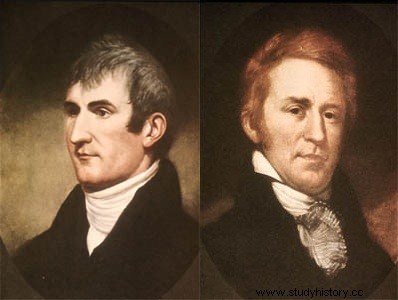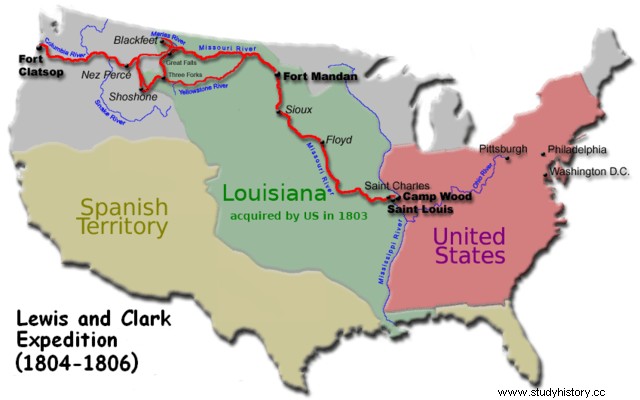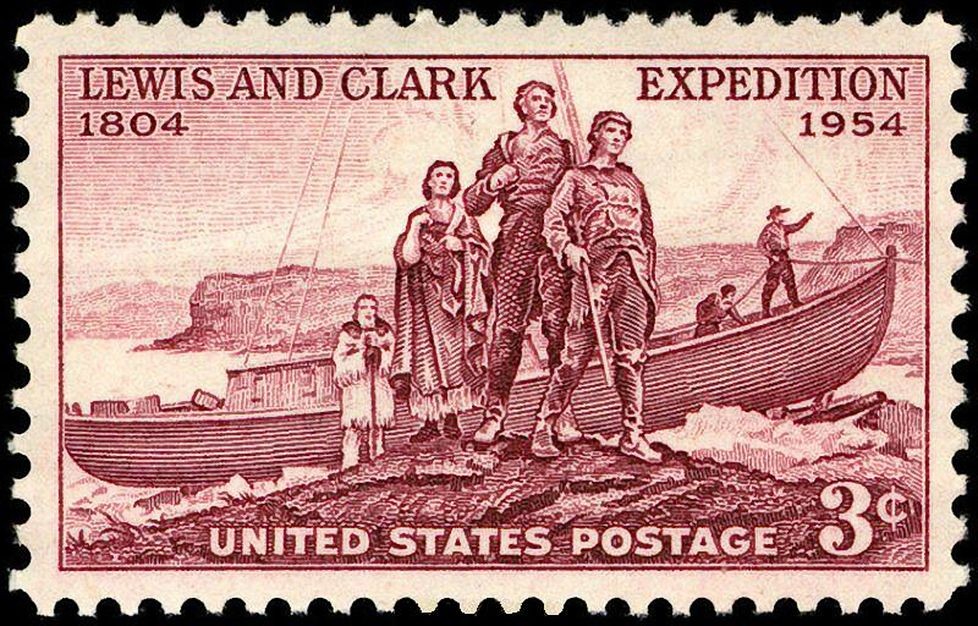The Lewis and Clark Expedition was the first American expedition to traverse what is now the western United States, departing from St. Louis (in present-day Missouri) in May 1804 and heading west to reach the Pacific coast.

Lewis and Clark
The expedition was commissioned by President Thomas Jefferson shortly after the Louisiana Purchase in 1803 and was formed by a group of United States Army volunteers under the command of Captain Meriwether Lewis and Lieutenant William Clark . The main objective was to explore and map the newly acquired territory and establish their own settlements in the vast Northwest Territory (Oregon) where the Spanish and British had already made an appearance. The secondary objectives of the campaign were scientific and economic:to study the flora and fauna of the area, discover possible mineral deposits, and establish trade with the local indigenous tribes. With all this they returned in September 1806 to San Luis to inform Jefferson.

Not knowing exactly how long they were going to spend on that adventure or what they were going to find, the members of the expedition received harsh training and their leaders, Lewis and Clark, were trained in handling the sextant (the GPS of the time ) by astronomer Andrew Ellicott and received a crash course in cures and medicinal remedies of the doctor Benjamin Rush . Rush, a personal friend of Jefferson and signer of the Declaration of Independence on July 4, 1776, was a respected physician of the time, although he was very fond of the theory of the four humors or liquids (black bile, bile, phlegm and blood) whose balance indicated the state of health of the person and all diseases would result from an excess or a deficit of any of them. In this way, among his most popular remedies were bloodletting and purging using laxatives. For Rush, excess bile in the body caused constipation, headaches, and tiredness, so he came up with bilious pills. With these pills, containing 50% calomel (mercuric chloride, a powerful purgative/laxative ) managed to evacuate excess bile and restore balance. He delivered Lewis a shipment of his pills with the indication that he should give one or two pills at the first sign of excess bile .
In an expedition of this magnitude, the first symptoms of tiredness and constipation soon appeared (they fed almost exclusively on game) and Lewis began to distribute the pills. In addition, since the administration of mercury was the only known remedy against syphilis, the pills were taken compulsively for the expedition (the contacts were normal with the indigenous). Due to their effectiveness and immediate effect, the expedition called the pills Rush’s Thunderbolts (Rush lightning). As calomel is hardly assimilated by the body and is expelled in the stool, the route of the expedition left a trail that never disappeared... that of mercury . Archaeologists have been able to identify the route of the expedition by the levels of metal that remain from the Rush Rays .

Sources:Discovering Lewis &Clark, Oregon History
